Public procurement officials control 23 percent of the United States Gross National Product through annual acquisistion of 2.1 trillion in goods and services. This text has been developed to provide a bridge between those who operate within the public sector and academia as a fist step toward identifying the body of knowledge associated with public procurement. This text is designed to provide both an overview and an overture into the field of public procurement. Public procurement professionals support operations with an uninterrupted flow of goods and services, purchase competitively by keeping ahead of the marketplace and all the while balance the dynamic tradeoffs among efficiency, equity and fairness, in addition to and competing with socio-economic objectives. This book is the first in a series devoted to the study and application of public procurement in today’s changing governmental environment and will prove to be a valuable resource, today and in the future.
Introduction to Public Procurement
KSh 11,102.00
Public procurement officials control 23 percent of the United States Gross National Product through annual acquisistion of 2.1 trillion in goods and services. This text has been developed to provide a bridge between those who operate within the public sector and academia as a fist step toward identifying the body of knowledge associated with public procurement. This text is designed to provide both an overview and an overture into the field of public procurement. Public procurement professionals support operations with an uninterrupted flow of goods and services, purchase competitively by keeping ahead of the marketplace and all the while balance the dynamic tradeoffs among efficiency, equity and fairness, in addition to and competing with socio-economic objectives. This book is the first in a series devoted to the study and application of public procurement in today’s changing governmental environment and will prove to be a valuable resource, today and in the future.
1 in stock
Related products
-
High Trust Selling: Make More Money in Less Time with Less Stress
KSh 995.00Do you feel like your career exists somewhere between your last sale and your next one? Are you always searching for the way to bridge the gap and create long-term success? Does it seem that somehow your life is only about your ability to perform on the job?
For too long you have bought into the idea that the business you do and the life you lead are completely separate. What Todd Duncan has learned in his twenty-two years of sales is the polar opposite: When you discover how to connect who you are and what you are about in your selling career, the results will be phenomenal and long-lasting.
No matter what industry you work in or what type of sales position you hold, adopting the practical principles in High Trust Selling will open the door to a new way of thinking and a life beyond your wildest expectations.
“Long-term sales success happens when high trust exists―when you are a trustworthy salesperson running a trustworthy sales business, and when it’s clear to your clients that you are a person of integrity who will not only do what you say but who also has the means to deliver.” ―Todd Duncan
-
How Women Rise: Break the 12 Habits Holding You Back from Your Next Raise, Promotion, or Job
KSh 1,695.00Leadership expert Sally Helgesen and bestselling leadership coach Marshall Goldsmith have trained thousands of high achievers — men and women — to reach even greater heights. Again and again, they see that women face specific and different roadblocks from men as they advance in the workplace. In fact, the very habits that helped women early in their careers can hinder them as they move up. Simply put, what got you here won’t get you there . . . and you might not even realize your blind spots until it’s too late.
-
Thinking, Fast and Slow-Daniel Kahneman
KSh 1,595.00”There have been many good books on human rationality and irrationality, but only one masterpiece. That masterpiece is Thinking, Fast and Slow” Financial Times
”A lifetime”s worth of wisdom” Steven D. Levitt, co-author of Freakonomics
Why do we make the decisions we do? Nobel Prize winner Daniel Kahneman revolutionised our understanding of human behaviour with Thinking, Fast and Slow. Distilling his life”s work, Kahneman showed that there are two ways we make choices: fast, intuitive thinking, and slow, rational thinking. His book reveals how our minds are tripped up by error, bias and prejudice (even when we think we are being logical) and gives practical techniques that enable us all to improve our decision-making. This profound exploration of the marvels and limitations of the human mind has had a lasting impact on how we see ourselves.
”The godfather of behavioural science … his steely analysis of the human mind and its many flaws remains perhaps the most useful guide to remaining sane and steady” Sunday Times
-
The Intelligent Investor-Benjamin Graham
KSh 3,880.00This classic text is annotated to update Graham’s timeless wisdom for today’s market conditions…
The greatest investment advisor of the twentieth century, Benjamin Graham, taught and inspired people worldwide. Graham’s philosophy of “value investing” — which shields investors from substantial error and teaches them to develop long-term strategies — has made The Intelligent Investor the stock market bible ever since its original publication in 1949.Over the years, market developments have proven the wisdom of Graham’s strategies. While preserving the integrity of Graham’s original text, this revised edition includes updated commentary by noted financial journalist Jason Zweig, whose perspective incorporates the realities of today’s market, draws parallels between Graham’s examples and today’s financial headlines, and gives readers a more thorough understanding of how to apply Graham’s principles.
Vital and indispensable, this HarperBusiness Essentials edition of The Intelligent Investor is the most important book you will ever read on how to reach your financial goals.
-
Kick Start Your Business ;100 Days to a Leaner, Fitter Organization
KSh 1,395.00Find out how to identify a company’s strengths and weaknesses and take the next step to make a business work smoothly. This guide identifies the essential tools to get a business to work better, offers hundreds of ideas and examples to turn your business into a powerhouse, includes useful resources and contacts, and provides worksheets to kick start your business.
-
Powerful Proposals: How to Give Your Business the Winning Edge
KSh 995.00How does a company constantly win more business than its rivals? A key factor is the ability to create proposals that outshine those from even the strongest competitors. Powerful Proposals helps businesses maximize the selling power of their proposals, with proven strategies for going beyond “this is what we do” documents in favor of customer-centered offers that highlight the tangible benefits your company offers. This powerful process offers tools and techniques that will let any firm: * assess their “winner or loser” proposal status and take proactive steps to become a winner * address the “”Big Four”” questions that a proposal must answer to be successful * create “A+” proposals in less time with less wasted effort via a simple, repeatable process * neutralize the issue of price when the firm is not the low-price provider Powerful Proposals takes readers step by step through designing executive summaries, writing themes, and generating the text. There is also valuable information on strategy, graphics, callouts, and other visual elements.
-
The 4-Hour Work Week: Escape the 9-5, Live Anywhere and Join the New Rich Paperback
KSh 2,495.00Discover The 4-Hour Work Week by Tim Ferriss — your guide to escaping the 9-5, working less, and living anywhere. Learn strategies for time freedom, remote income, and a life on your own terms.
A new, updated and expanded edition of this New York Times bestseller on how to reconstruct your life so it’s not all about work
Forget the old concept of retirement and the rest of the deferred-life plan – there is no need to wait and every reason not to, especially in unpredictable economic times. Whether your dream is escaping the rat race, experiencing high-end world travel, earning a monthly five-figure income with zero management, or just living more and working less, this book is the blueprint.
This step-by step guide to luxury lifestyle design teaches:
* How Tim went from $40,000 dollars per year and 80 hours per week to $40,000 per MONTH and 4 hours per week
* How to outsource your life to overseas virtual assistants for $5 per hour and do whatever you want
* How blue-chip escape artists travel the world without quitting their jobs
* How to eliminate 50% of your work in 48 hours using the principles of a forgotten Italian economist
* How to trade a long-haul career for short work bursts and frequent ‘mini-retirements’.This new updated and expanded edition includes:
More than 50 practical tips and case studies from readers (including families) who have doubled their income, overcome common sticking points, and reinvented themselves using the original book as a starting point
* Real-world templates you can copy for eliminating email, negotiating with bosses and clients, or getting a private chef for less than £5 a meal
* How lifestyle design principles can be suited to unpredictable economic times
* The latest tools and tricks, as well as high-tech shortcuts, for living like a diplomat or millionaire without being eith -
Afro-European Trade in the Atlantic World The Western Slave Coast, c. 1550- c. 1885
KSh 14,560.00From 1550 to colonial partition in the mid-1880s, trade was key to Afro-European relations on the western Slave Coast (the coastal areas of modern Togo and parts of what are now Ghana and Benin). This book looks at the commercialrelations of two states which played a crucial role in the Atlantic slave trade as well as the trade in ivory and agricultural produce: Hula, known to European traders as Grand Popo (now in Benin) and Ge, known as Little Popo (nowin Togo). Situated between the Gold Coast to the west and the eastern Slave Coast to the east, this region was an important supplier of provisions for Europeans and the enslaved Africans they purchased. Also, due to its positionin the lagoon system, it facilitated communication along the coast between the trading companies’ headquarters on the western Gold Coast and their factories on the eastern Slave Coast, particularly at Ouidah, the Slave Coast’s major slave port. In the 19th century, when the trade at more established ports was disrupted by the men-of-war of the British anti-slave trade squadron, the western Slave Coast became a hot-spot of illegal slave trading.
Providing a detailed reconstruction of political and commercial developments in the western Slave coast, including the transition from the slave trade to legitimate commerce, this book also reveals the region’s position in the wider trans-Atlantic trade network and how cross-cultural partnerships were negotiated; the trade’s impact on African coastal “middlemen” communities; and the relative importance of local and global factors for the history of a region or community.Silke Strickrodt is Visiting Research Fellow at the Department of African Studies and Anthropology at the University of Birmingham. She is co-editor (with Robin Law and Suzanne Schwarz) of Commercial Agriculture, the Slave Trade and Slavery in Atlantic Africa (James Currey, 2013).

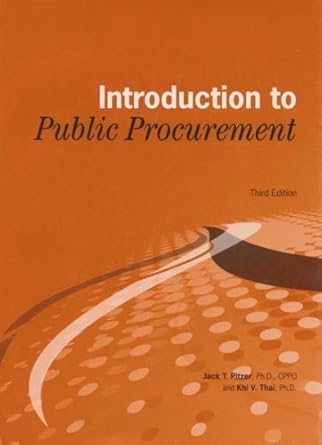
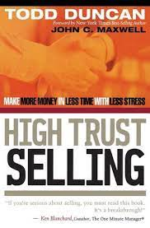
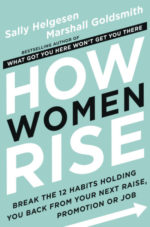
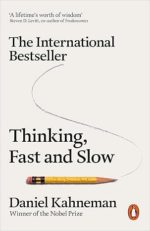
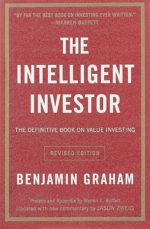


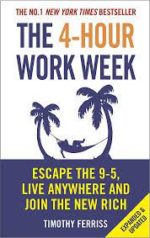
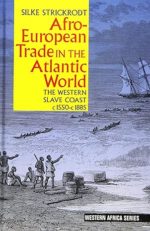
Be the first to review “Introduction to Public Procurement”